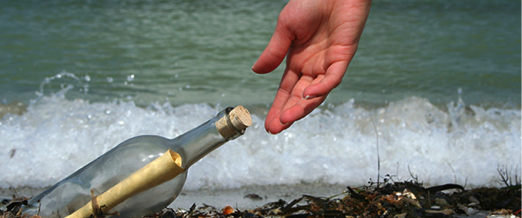
Just when I thought things could not get worse, with all the suffering COVID-19 has brought the world, things actually did get worse with the mass shooting in Nova Scotia this week. With 23 known dead, what great pain there must be within those families, including the family of the shooter.
When I try to ponder something that is either too good or too bad, my mind boggles, and I lose words. Even wordsmiths—writers, poets, and songwriters—often cannot find words. When words fail, then symbols, images, and rituals become the carriers of meaning. What carries meaning for me right now is the image of the butterfly, the symbol of perseverance, transformation and new life.
A few years ago, while on a men’s rite of passage retreat, one of the presenters mentioned “imaginal cells”. It sounds like a term from a children’s storybook; but it is the actual term used by scientists.
Here’s the story. When a caterpillar nears its transformation time, it begins to eat ravenously, consuming everything in site. (Interestingly, we are often called “consumers” and one of the largest manufacturers of heavy construction equipment is called “Caterpillar Inc.” I digress). After eating many times its body weight, the caterpillar becomes heavy and too bloated to move (much like some of us couch potatoes the last four weeks. I digress, again). Attaching itself to a branch, the outer layer of hardened skin forms a chrysalis limiting the caterpillar’s freedom for the duration of the transformation. While hanging upside down, this is when the miracle occurs. Tiny cells, that biologists call imaginal cells, begin to appear. These cells are so totally different from the caterpillar’s cells that the caterpillar’s immune system thinks they are the enemy and begins to destroy them. But these imaginal cells, being wholly different from caterpillar cells and vibrating at a different frequency, will not be deterred. They start to clump together, resonate at the same frequency, and pass information from one to another. Biologists have only recently discovered that the butterfly has its own unique genome (the unique genetic make up of an organism; its DNA) carried by the caterpillar. Who would have imagined that one creature can actually carry the genetic makeup of another! Because of this bizarre anomaly, caterpillar’s immune system tries to fight these imaginal cells; it thinks that a totally different organism is attacking it. Eventually, the caterpillar’s immune system is overwhelmed as the imaginal cells form clumps building the new creature—the butterfly. The caterpillar’s body dies and becomes a soupy, nutritious mixture necessary for the butterfly’s growth. The string of imaginal cells suddenly realizes that it is something altogether different from the caterpillar. The chrysalis becomes transparent, the need for restriction has been outgrown, and the butterfly hatches. The butterfly emerges upside down but immediately turns right side up and holds its chrysalis reverently as if to say, “thank you” to where it came from.
In the autumn of 1983, while taking an introductory psychology course in college, I had decided to do a term paper on the morbid topic of death and dying. Little did I know when I chose the topic, that the world’s authority on death and dying, Elisabeth Kubler-Ross, would be giving a lecture not far from the college campus. Bingo. (You may recall that this pioneering psychiatrist developed the classical stages of grief: denial, anger, bargaining, depression, and acceptance). Following the end of the Second World War, Elisabeth told us she felt compelled to visit a former Nazi-run concentration camp.
She visited one in Poland and there she discovered hundreds of butterflies carved into the walls of the barracks. As the Jews, and others, were led to the gas chambers, their last act of defiance was to pick up a sharp stone or a rusty nail from the ground and hurriedly carve an image of a butterfly. These final works of art, by those facing death, stayed with Elisabeth her entire life and influenced her thinking about the end of life.
While I think of the inconveniences COVID-19 has brought to my regular routines, I immediately think of those who have lost loved ones due to this pandemic. I think of the 23 people who lost their lives due to the mass shooting this week as well as their families and friends. I think of the butterflies in the concentration camps. In comparison, my little inconveniences are just that—little inconveniences. In the midst of it all, I hang on to hope. Hope always seems to present itself in the smallest form. It is like imaginal cells (butterfly cells in disguise) living in the caterpillar without the caterpillar ever being aware. The caterpillar plays host to something it initially resists and finally succumbs to—the new life it was destined for. Good Friday must succumb to Easter Sunday, just as winter must succumb to spring.
The Cross for Christians, much like the butterfly for the secular world, is the ultimate symbol of perseverance, transformation, and new life. Perhaps the butterfly isn’t so secular after all. Deep was calling on deep in those dreaded barracks.
Something small and destructive is afoot in the land, an air-borne virus. Something else is also afoot in the land. This something else, like the imaginal cells, will not be deterred until its work is done. It is the Spirit of the Risen Lord. In time, this Spirit will lead us from our upside down world within our own chrysalis, to finally being right side up. And when we finally emerge from this pandemic, we might even hold reverently this time and say, “thank you” to where we came from.
Fr. Phil Mulligan
APR
2020

About the Author: